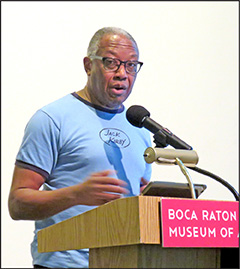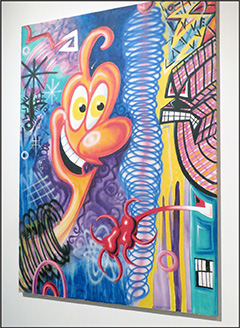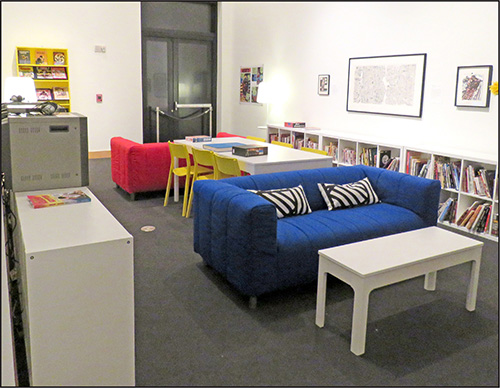
By Rachel Galvin
Since the first modern comic book in 1933, kids and adults alike have found themselves enthralled in the stories and inspired by the imagery within. Comic Book guru Calvin Reid was one of those who discovered the medium when he was a kid, growing up in the 1960s. Reading through the pages, seeing the work of the likes of Jack Kirby and others through the years, he became hooked. Today, he is the editor of Publisher’s Weekly in New York and oversees comic books and graphic novels.
“I am the ultimate comics fan. I came to New York in the early 80s to be an artist. I had a background in journalism and ended up in book publishing,” he explained.
On July 7, he came here to the Boca Raton Museum of Art to give a special talk about how the industry has evolved through the years.
The comics in America, he said, have notoriously been settled into one genre — superheroes, something that has not been happening in other countries. But that has shifted. Today, there are comics of all types. Manga (Japanese animation) is one type that has become hugely popular since the late ‘90s and early 2000s.
The power moved away from the big publishing houses as smaller houses opened as well.
He waxed nostalgic about his favorite comics as he showed his slideshow. He also talked about some of the varied comics that have become available and about the influencers in the biz.
“I remember comics were 10 cents at first. They were 25 cents through the bulk of my childhood. I was inspired by Action Comics,” he said, mentioning various other comics by legends like Kirby, Steve Ditko and Stan Lee. Reid said he started reading DC comics but he later discovered Marvel. He seems to enjoy all of the above.
You can’t talk about comics without mentioning the profound impact of Stan Lee and his Marvel movies, which have captured a worldwide audience. The Avengers may have come to an end but other heroes like Spiderman still make the silver screen (see pg. 9 for review of the latest film).
Another change he has seen is the movement of comics from magazines into book form taking on the moniker of “graphic novels.” He saw a shift to a darker tone in some superhero books especially after the release of the Dark Knight and Watchman. In that vein, he talked about writers Alan Moore and Frank Miller. But he also mentioned the Pulitzer award-winning Maus created by Art Spiegelman, serialized from 1980 to 1991. In it, Spiegelman interviews his father, a Holocaust survivor. He anthropomorphizes the characters. (Jews are mice and Germans are cats, for example). He mentioned Robert Crumb and his wife Aline, who discussed culture using satire in their comics. Crumb is responsible for a well-known comic called Fritz the Cat, among others. He mentioned other artists like the Hernandez Brothers and their Love & Rockets, which show a different view of society. Today, you can walk into Barnes & Noble, said Reid, and find graphic novels of all different types. Women of color and LGBTQ are represented, as well as pretty much any group you can think of, something that was not happening in earlier days.
Another change is how the comics are drawn. They now usually employ digital into the craft and, of course, there are also web comics. So things are still shifting.
If you want to find a comic book that is right for you, he said ask a librarian. He said libraries are taking on more and more of the comic books and graphic novels into their collections.
Beyond the Cape

Reid was instrumental in the organization of the reading room filled with comics and graphic novels within the exhibit at the museum right now called “Beyond the Cape” that is happening until Oct. 6. Reid’s talk fits into that theme well, as he not only talked about how comic book superheroes no longer wear capes as part of their costumes usually, but also how the industry has evolved to include more than just the superhero genre.
If you want to find out more about the exhibit currently at the museum which features art inspired by comics and also the reading room, visit www.bocamuseum.org.
Tree of Knowledge
The museum is free the whole month of July and you can be part of an upcoming exhibit – the Tree of Knowledge by Maren Hassinger, a sculptor and performance artist. She will be installing what will look like a Banyan tree made out of strips of newspapers inspired by Boca Raton’s Pearl City neighborhood and the Banyan tree that serves as the historical marker in that community settled originally by African-Americans. If you go to the museum, you can twist the newspapers and your pieces will be contributed into the artwork. Anyone who contributes will receive two free passes that can be used any time into the museum (so you can come back and see the finished work, which will be on display in the fall).







